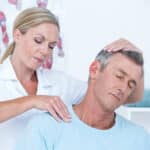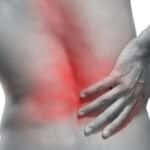You’re 4 weeks into another “back pain episode” after throwing out your back while bending over to put on socks. You see your primary care physician who refers you to a spinal orthopedic who takes an x-ray and sees some arthritic changes on your imaging. You’re given a script for some anti-inflammatories, educated on the incurable diagnosis of arthritis, offered spinal steroid injections, and sent on your way.
If this sounds familiar to you, you’re not alone.
Back pain is a very common ailment with nearly 65 million Americans reporting a recent back pain episode and over 15 million Americans living with chronic back pain. It’s a pain that many of us have experienced and can undeniably affect your mood, function, and overall quality of life.
Among the various culprits of back pain, arthritis often emerges as a leading suspect. If you’re above the age of 60, it’s almost always the go-to diagnosis if any findings are seen on an X-ray or MRI. And to be frank, that diagnosis is downright depressing! You’re basically told your cartilage is wearing and there’s nothing that can be done to solve it except to go through a highly invasive surgery that has mediocre outcomes at best.
Now let us just for a second, consider what else could potentially be causing your back pain. And yes, this list is quite long and not exhaustive:
- Muscular tightness or spasm in the lower back
- Weakened or inhibited core or gluteal muscles
- Poor hip mobility
- Poor upper back mobility
- Tight hip flexors from prolonged sitting
- Stress
- Poor posture or biomechanics with movement
- Limited movement through the posterior chain
- Imbalances in muscle strength
- Repetitive movements
- Lack of recovery
And the best part about the above list is that every single item is ADDRESSABLE. That’s right, your pain may not be coming from arthritis, you may just have multiple trigger points in your erector spinae muscles and tight hip flexors from sitting 8 hours a day. This is why it is SO important to find a practitioner who is dedicated to identifying and treating both the symptoms and the root cause of your issues. Back pain is often multi-factorial and quite complex, to be honest. Get down to the underlying source of your dysfunction and set yourself up for a successful recovery with the right tools and the right professionals on your side.
So what does arthritis actually feel like?
Arthritis is an inflammatory condition. Whenever you see the suffix “-itis”, that refers to inflammation of something and in this case, the joints. Of the various types of arthritis, osteoarthritis and rheumatoid arthritis are among the most common forms affecting the spine. Patients with true arthritic pain will often report a constant achy, throbbing pain that can’t be relieved with any positional changes. Like many inflammatory conditions, there is little you can do to make true arthritis symptoms better or worse.
Now when you can change your position and make your back feel better or worse- ie. you feel better as you move around, or your symptoms “warm up” with a hot shower and some time at the gym, your problems are likely mechanical. This means that you are getting something moving, maybe a facet joint in your back or your hips, resulting in reduced strain and reduced pain in your lower back. This is great news both for prognosis and for treatment opportunities as it opens up a whole host of things that can be addressed with the right practitioner.
The complexity of back pain requires a closer look beyond a simple X-ray to determine whether arthritis is the sole culprit or if there are other contributing factors. With so many interconnected structures in the spine, the odds are in your favor that there are addressable elements, outside of degenerative changes, that can positively impact your quality of life.
Why are so many people misdiagnosed with arthritis?
The problem with our healthcare system is it prioritizes efficiency over efficacy. Physicians are put under a lot of stress to see “x” amount of patients a day to meet quotas, maintain productivity, and help as many people as possible. As such, it’s not uncommon for your provider to only have 10 minutes of time dedicated to reviewing your imaging, discussing your history and giving you a diagnosis and treatment plan. That’s a big ask in a short period of time. So when a physician sees a patient with degenerative changes on their imaging, particularly in the age range of 60+, it’s easy to blame arthritis and move on to the next patient.
Remember though that imaging is only one small piece of the clinical puzzle. In fact, 60-90% of people will show something on an MRI- even if they are PAIN FREE!! There are things that occur in our bodies, much like the wrinkles on our face, that are normal wear and tear associated with aging. Just because you have degenerative findings, does NOT mean that that is where your pain is coming from.
Decode your back pain with the help of mPower Physical Therapy
Decoding your back pain requires a comprehensive approach that considers biopsychosocial contributors to pain, your full past medical history, lifestyle factors, and a detailed movement screen. With the help of our dedicated team at mPower Physical Therapy, we can identify whether arthritis is the primary cause of your back pain or if additional factors are at play. We are here to steer people away from unneeded procedures, surgeries, and injections and instead provide you with solutions that actually solve the problem causing your symptoms in the first place.
If you feel better with movement, MOVE. If your posture is declining, let’s improve it! Join us as we look at the body as a whole to optimize your movement and improve your spinal health. Interested in learning more? Give us a call or send us a message through our website and let’s have a conversation about what you’re going through and how we can help.
Resources:
- https://hpi.georgetown.edu/backpain/#:~:text=Nearly%2065%20million%20Americans%20report,condition%20in%20the%20United%20States.





